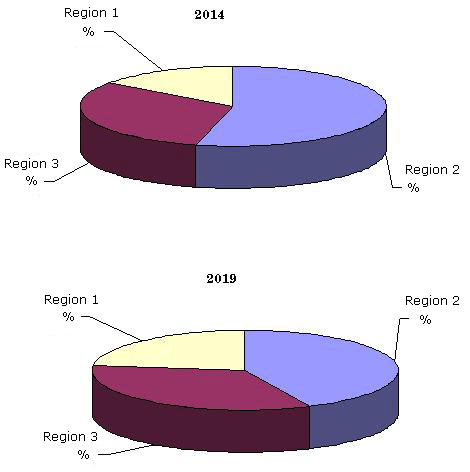Ebola hemorrhagic fever (Ebola HF) is a severe,
often-fatal disease in humans and primates (monkeys, gorillas, and chimpanzees)
that has appeared sporadically since it was initially identified in 1976. The
virus is one of two members of a family of RNA viruses called the Filoviridae.
Ebola is one of the potential bioterrorism agents now targeted by the National
Institute of Allergy and Infectious Diseases (NIAID).
Ebola is one of the world's deadliest diseases, with up to 90% of cases resulting in death, although in the current outbreak the rate is about 55%. The outbreak continues to wreak havoc in West Africa, especially Guinea, Sierra Leone and Liberia, each dealing with hundreds of cases every day. According to WHO reports, the collective death toll has now risen to 2,615 as of August 22, 2014.
Until recently, two pharmaceutical companies were working on R&D and possible vaccine solutions for Ebola. In July 2010, Tekmira, a Canadian pharmaceutical company, was awarded a contract worth up to $140 million as part of the U.S. government’s Transformational Medical Technologies (TMT) program. The contract was for Tekmira to further develop TKM-Ebola, an RNAi therapeutic, to treat Ebola. Unfortunately, after facing a number of difficulties, TMK-Ebola has been put on hold as of July 2014.
Ebola is one of the world's deadliest diseases, with up to 90% of cases resulting in death, although in the current outbreak the rate is about 55%. The outbreak continues to wreak havoc in West Africa, especially Guinea, Sierra Leone and Liberia, each dealing with hundreds of cases every day. According to WHO reports, the collective death toll has now risen to 2,615 as of August 22, 2014.
Until recently, two pharmaceutical companies were working on R&D and possible vaccine solutions for Ebola. In July 2010, Tekmira, a Canadian pharmaceutical company, was awarded a contract worth up to $140 million as part of the U.S. government’s Transformational Medical Technologies (TMT) program. The contract was for Tekmira to further develop TKM-Ebola, an RNAi therapeutic, to treat Ebola. Unfortunately, after facing a number of difficulties, TMK-Ebola has been put on hold as of July 2014.
However, more prominent in the media has been ZMapp, a
biomedical drug created by California-based Mapp Biopharmaceuticals. This drug
was shown to result in 100% cure when administered to monkeys during pharmaceutical
trials. Kent Brantly, a 33-year-old doctor, and 59-year-old aid worker,
Nancy Writebol, were two of the early patients of the drug. Both became
infected during their stay in Central Africa to combat the deadly virus.
With the rising death toll in Central and West Africa, academic researchers, biotechnology specialists, and pharmaceutical leaders in Boston and elsewhere are offering tantalizing evidence that vaccines against Ebola and other killer diseases can be made faster and cheaper than previously believed.In a study accepted for publication in the journal, "Human Vaccines & Immunotherapeutics," a Boston research consortium, VaxCelerate, details how it produced a vaccine ready for animal testing against lassa fever, a hemorrhagic disease similar to Ebola, for less than $1 million in four months.
VaxCelerate, based within Massachusetts General Hospital’s vaccine center, is part of a broader push by the U.S. government to improve — even transform — vaccine development to better respond to emerging infectious diseases. The U.S. Department of Health and Human Services and the Department of Defense are working with several Boston-area companies and scientists on vaccine initiatives. Also under development are therapies that might help people who have contracted Ebola or who are likely to come into contact with it.
For our relevant reports on Ebola, visit the links cited below.
With the rising death toll in Central and West Africa, academic researchers, biotechnology specialists, and pharmaceutical leaders in Boston and elsewhere are offering tantalizing evidence that vaccines against Ebola and other killer diseases can be made faster and cheaper than previously believed.In a study accepted for publication in the journal, "Human Vaccines & Immunotherapeutics," a Boston research consortium, VaxCelerate, details how it produced a vaccine ready for animal testing against lassa fever, a hemorrhagic disease similar to Ebola, for less than $1 million in four months.
VaxCelerate, based within Massachusetts General Hospital’s vaccine center, is part of a broader push by the U.S. government to improve — even transform — vaccine development to better respond to emerging infectious diseases. The U.S. Department of Health and Human Services and the Department of Defense are working with several Boston-area companies and scientists on vaccine initiatives. Also under development are therapies that might help people who have contracted Ebola or who are likely to come into contact with it.
For our relevant reports on Ebola, visit the links cited below.
References:
·
http://www.dailytech.com/Second+ZMappTreated+Patient+Dies+of+Ebola+Supplies+Run+Out/article36429.htm














